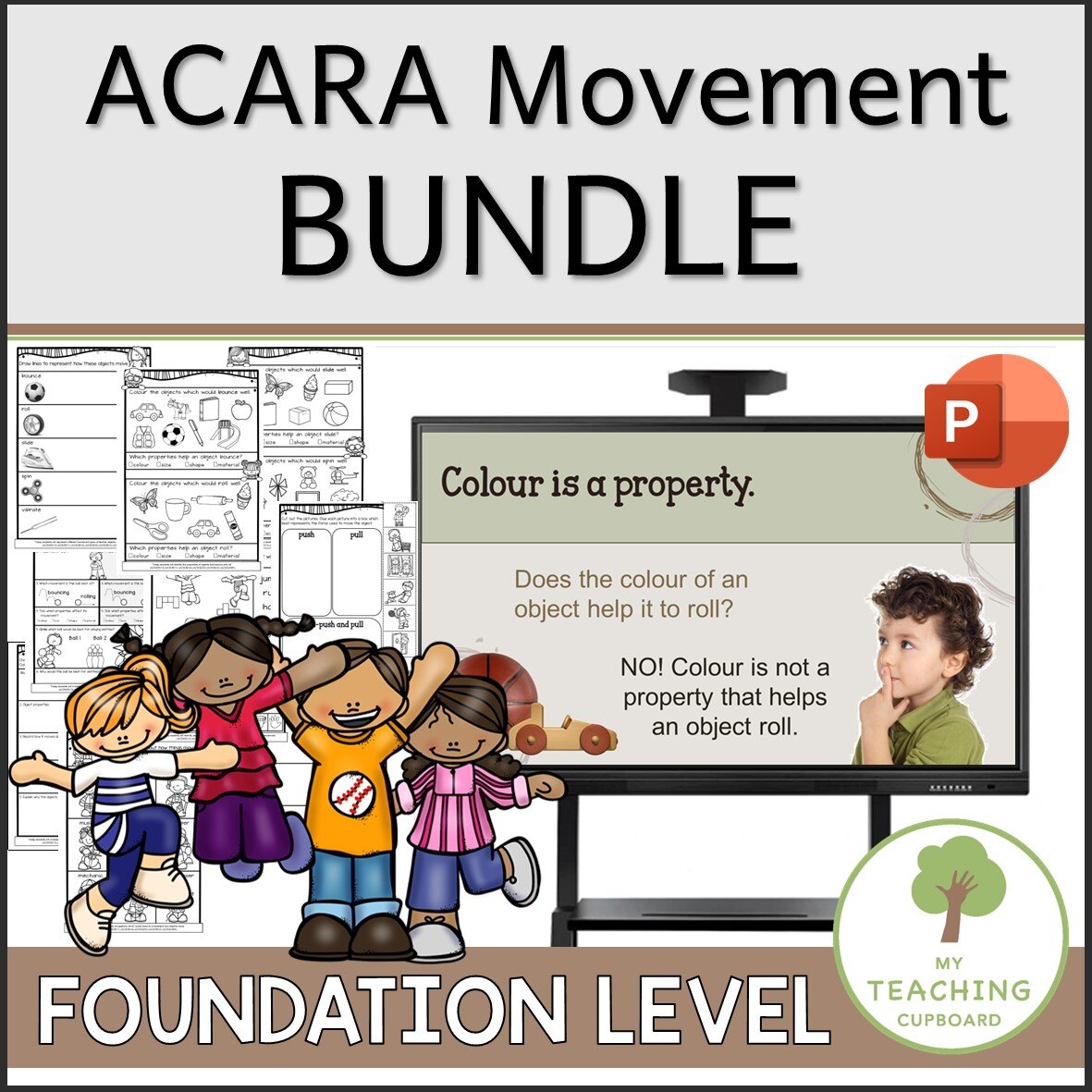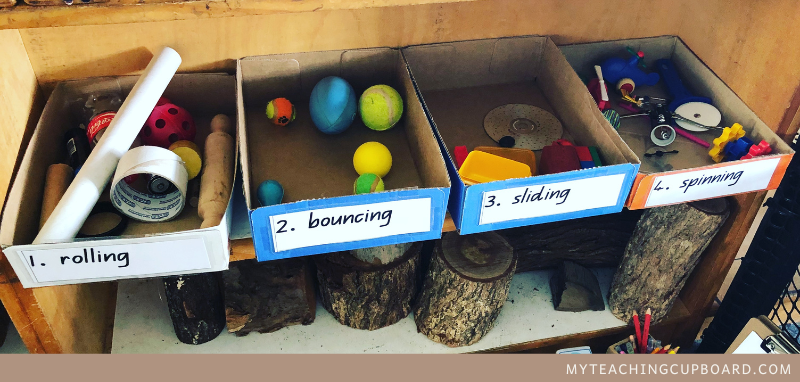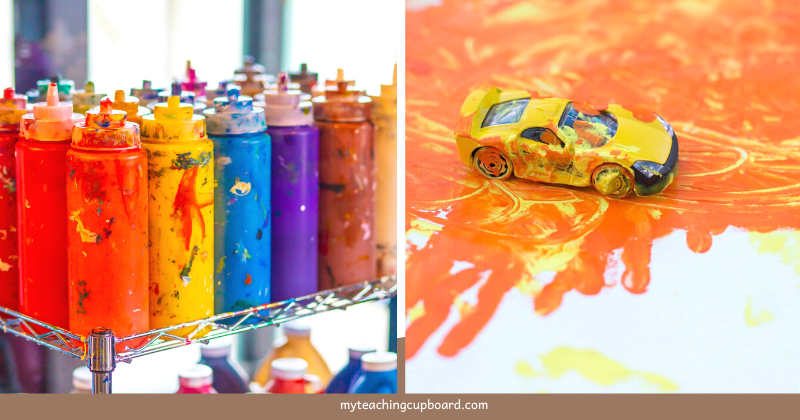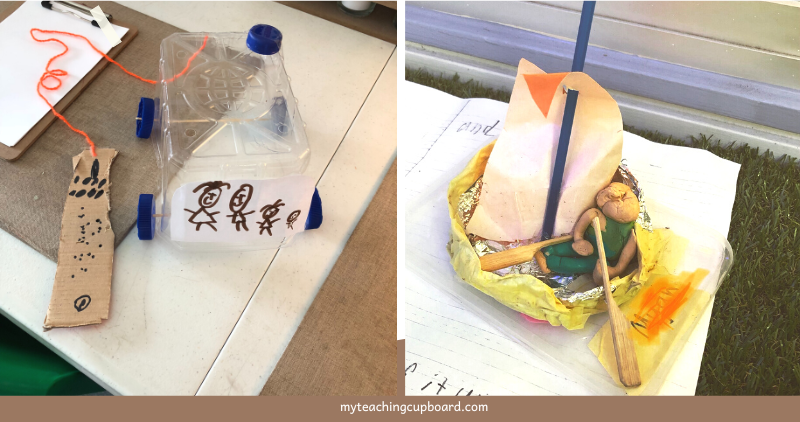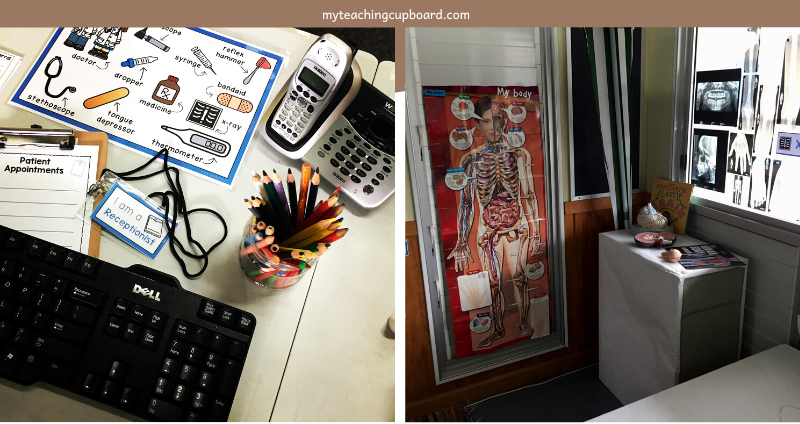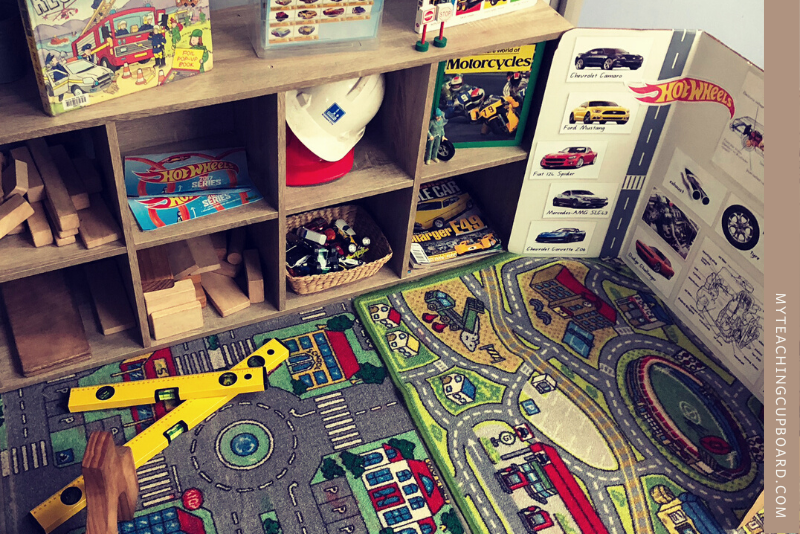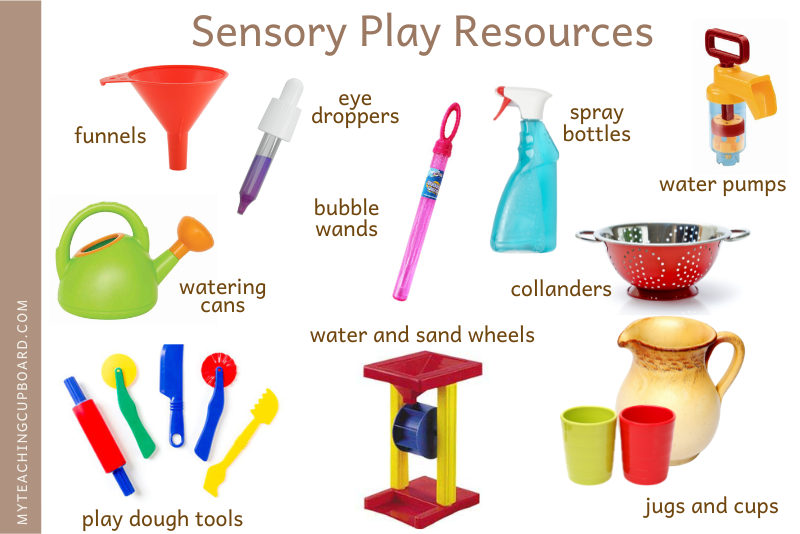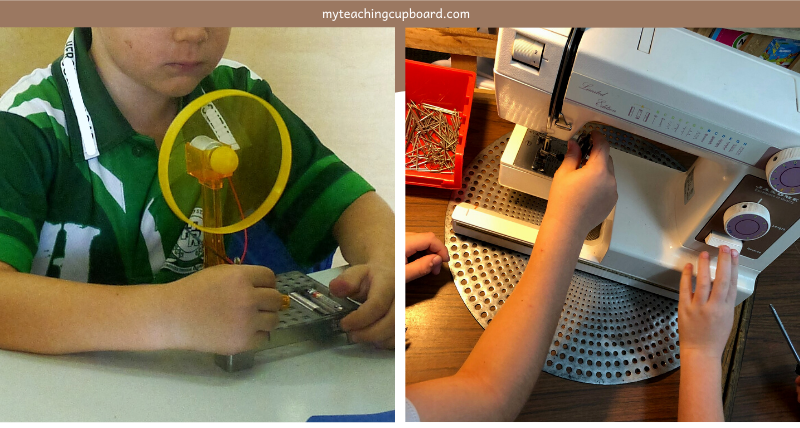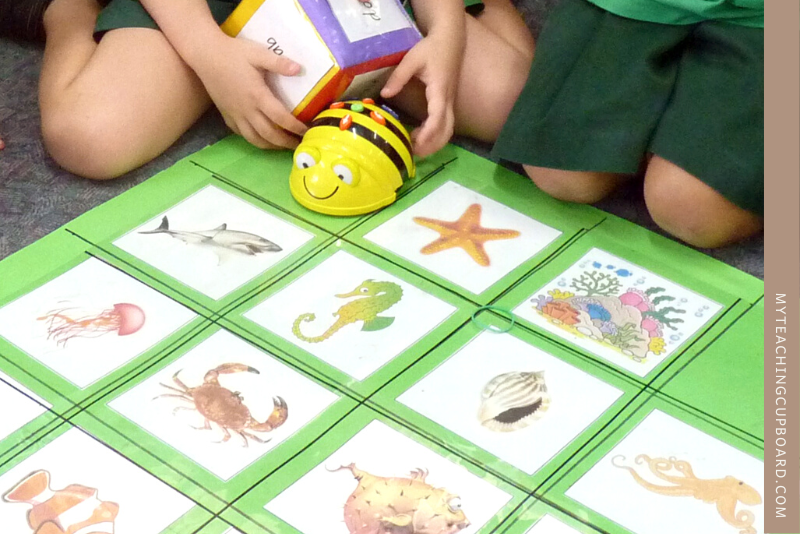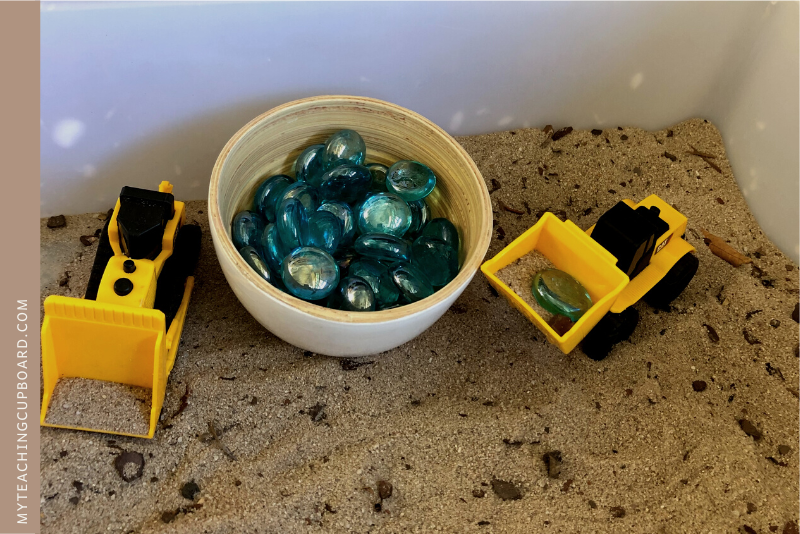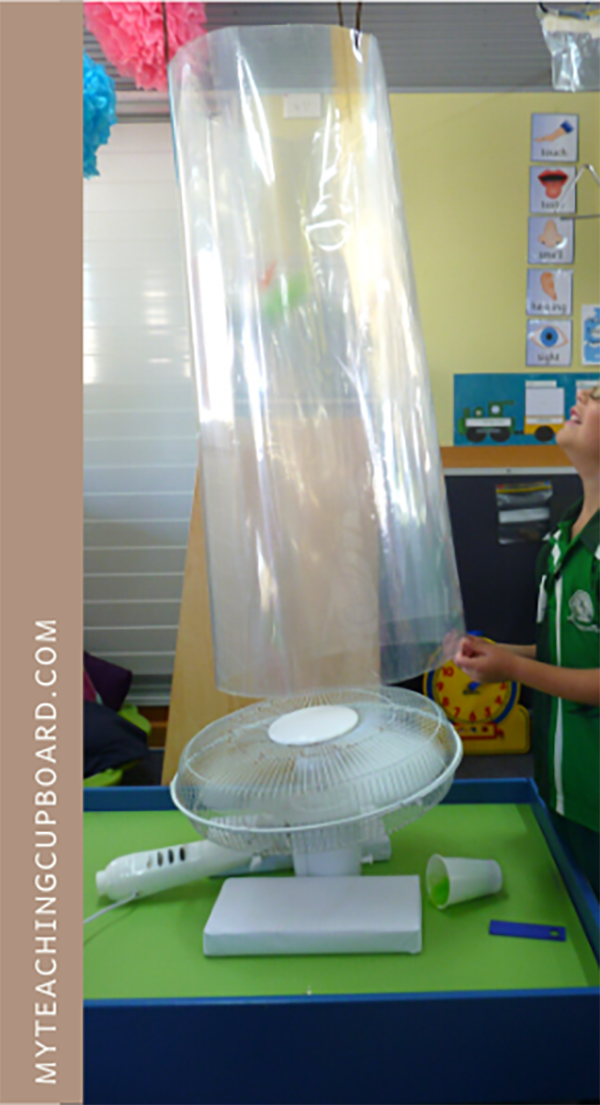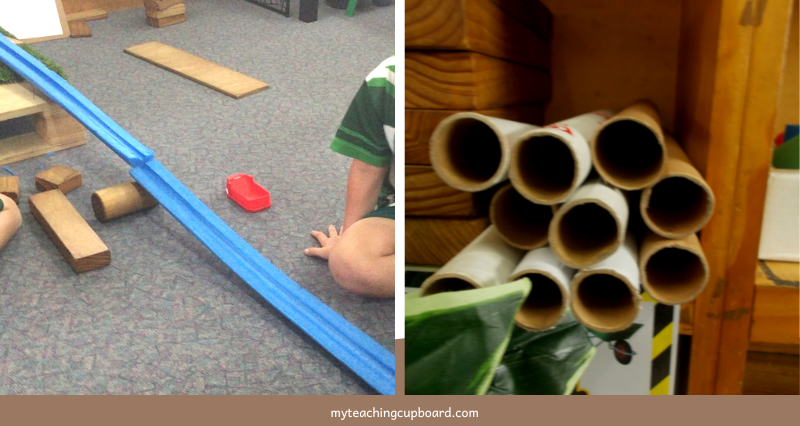The Trajectory Schema
The trajectory schema is all about movement. If you have children in your classroom throwing things, fascinated with moving objects or force and motion, you probably have children developing their trajectory schema.
This blog post will explain exactly what this play schema is and give you a number of playful hands-on activities you can easily use in your classroom to support children developing their trajectory schema.
What Is a Play Schema?
Schemas are repeated patterns of behaviour. You will be observing play schemas whenever you notice children in your class doing certain behaviours over and over when they play. There are nine schemas most commonly observed in young children.
This blog post is about one of those nine schemas – the trajectory play schema. If you are interested in learning about any of the other play schemas, check out this blog post: A Guide to Play Schemas in Early Childhood Education
Schematic play is about how a child plays and explores the learning resources and environment. It isn’t a specific type of play like dramatic play or sensory play. You can observe play schemas in all areas of the classroom.
You might observe a child demonstrating the trajectory play schema at block construction when they spin, slide and throw blocks around the area. You might see them making paper planes to throw around the room at the Makerspace. This would be another example of a child using the trajectory schema.
Sometimes you might not make a connection between these observations because they seem like different forms of play in different scenarios, but the play schema in these examples remains the same.
Once you’ve observed a child displaying a specific play schema, you will often notice that child repeating the same action schematically using a range of different objects or even their own bodies.
Why Are Play Schemas Important in a Play-Based Classroom?
Understanding play schemas and being able to pinpoint the ones your students are developing is critical to the success of your early childhood classroom. When you become aware of the play schemas your students are developing you will:
Understand your students and their developmental needs.
Deepen your understanding of how children learn.
Be able to tap into your student’s interests.
Increase engagement.
Know how to encourage your students to be more curious.
Extend the learning and the intensity of your student’s play.
Make the right observations to inform your planning.
Be able to easily differentiate the learning experiences you offer.
When you understand play schemas, you can use this knowledge to help you make informed observations. You’ll be able to document what and why the children are demonstrating certain behaviours during investigative playtime. Understanding play schemas will help you gain insights into your children’s passions and interests. You will be armed with the information you need to adapt the curriculum and plan for appropriate engaging and purposeful learning experiences.
Understanding play schemas can also help you understand what can sometimes be seen as an undesirable classroom behaviour. For example, you might have a child constantly flipping or spinning objects at dramatic play. This would certainly be quite annoying for you and all the other children trying to play there. This behaviour might be seen as undesirable, but when you understand that this behaviour is coming from a child exploring the trajectory schema, you can set up a learning invitation to accommodate this schema and turn the undesirable behaviour into a desirable one.
When you understand why certain behaviours are happening, you come to realise children do not simply misbehave. There’s always a reason for desirable and undesirable behaviours and sometimes play schemas can be that reason.
Being able to recognise and use play schemas is crucial to the success of any play-based classroom.
What is the Trajectory Schema?
Children building the trajectory schema enjoy movement. They will love experimenting with direction, force and motion, and cause and effect. They are attracted to observing and creating movement, as well as being moved and moving their own bodies.
These children are fascinated by how things move horizontally, vertically, or diagonally. They like to investigate what happens when objects are thrown or pushed. During schematic play, you will notice them knocking things over, running fast, or making objects to fly through the air.
Exploring movement and the Science unit on How Things Move is going to grab the attention of children developing their trajectory schema. This schema is all about movement.
Developmentally, this schema is one of the earliest and most common schemas that young children explore. I have had many children still interested in this schema in preschool or kindergarten and even in first grade. They benefit from activities involving toy cars, paper planes, spinning objects, marble runs, and anything to do with balls.
Because the trajectory schema involves a lot of throwing and pushing, it is one of the play schemas that requires a lot of support in the classroom. As educators of children developing the trajectory schema, we need to help these children express this schema in a safe way.
What are Children Learning?
Children exploring the trajectory play schema are consistently experimenting, observing, and learning. With every drop or throw, they are learning.
Not only are they learning cause and effect, but they are discovering how different things can fall at different speeds. They notice how objects make different sounds when they land on different surfaces. How the different forces used when dropping or throwing things changes the result and even how objects feel different in their hands when they are dropped or thrown.
Children developing their trajectory schema are also developing their gross motor skills. They will be fine-tuning their visual tracking skills and growing in their body awareness. These children will also be working on scientific skills like observing, and predicting.
As children mature and develop their trajectory schema further, you might notice them beginning to explore their spatial awareness and developing their positional language.
They become interested in shapes and grids. They use their understandings of horizontal and vertical lines to explore open and closed lines, corners, and curves. Shapes like rectangles, squares, and triangles become interesting to them. These children will start to make marks in the forms of crosses, ladders, and grids.
An interest in lines and grids will naturally lead these children into explorations of number lines and arrays.
Children naturally develop mathematical concepts through their exploration of the trajectory schema. They will deepen and extend their understandings of measurement concepts like length, height, and distance.
What Vocabulary Supports the Trajectory Schema?
Fly, spin, twirl
Glide, float, drop
Bounce, high, low
Heavy, light
Land, target, take off, launch
Swing, pendulum, pulley
Up, down, fast, slow, high, low
If you are interested in supporting your student’s oral language through their interest in the trajectory schema, you will love my illustrated movement vocab cards. Add them to any investigation area to act as provocations that will stimulate new learning explorations and language development.
Hands-on Activities to Support a Trajectory Schema in the Play-Based Classroom
Because children exploring the trajectory schema will be fascinated with movement, there are numerous hands-on learning experiences you will have the opportunity to offer your students. Supporting this schema in a play-based classroom is easy!
In kindergarten and first grade, children should have access to a wide variety of resources that foster their experimentation of movements.
It is important that educators consider how and where these resources are offered too. Exploration of the trajectory schema is often related to risky play so it’s very important to understand and always follow your health and safety guidelines.
How Things Move Science Unit
The foundation stage science unit on force and motion or how things move is going to be of particular interest to children exploring their trajectory schema. This science unit is all about the way objects move and how movement depends on a variety of factors, including their size and shape.
In this science unit, students observe and describe movement. They will also consider terms for describing movement and focus on the movement of objects and their own bodies. Any students interested in movement will love this unit.
I have designed 10 PowerPoint Science lessons and a corresponding Student Journal for this unit. If you are teaching this ACARA Science unit, you might be interested in checking it out. It has everything you need to teach the Australian Curriculum Physical Sciences Unit on Movement for the Foundation Stage.
The lessons and the journal activities in this bundle have been carefully aligned to ACARA and all the content descriptors from the Foundation Physical Sciences strand are covered. Each page in the student journal corresponds with each of the 10 PowerPoint lessons.
Your students will be able to use the journal to record and represent their knowledge and understandings and it could also be used as evidence of learning and to inform assessment grades too if you want.
Exploring the Trajectory Schema through Block Play
Block play provides many opportunities for your students to explore the trajectory schema. How you do that has everything to do with the supplementary resources you offer in this space.
Cars and road mats are always popular with children interested in the trajectory schema. Trains and train tracks are another good resource to add. Head to your math resources and find some wooden 3D shapes that roll – cylinders, spheres and cones.
You can always set up some ramps using the blocks in your block play area if you want to encourage children to explore their trajectory schema. They will love exploring ramps.
One of our favourite investigations at block play is when we investigate force and motion in science. We make a little pendulum wrecking ball by putting a tennis ball into a stocking hung from the ceiling. The children love exploring simple physics laws with this simple tool.
The Trajectory Schema in the Makerspace and Art Area
To support the trajectory schema in a makerspace or through art and craft experiences, you need to think about adding resources to encourage children to experiment with movement. Here are some ideas you might like to try:
Blowing paint with straws.
Adding eye droppers and coloured water to the area.
Supply spray bottles filled with watered-down paint.
Add paint to squeezy bottles for children to experiment with dropping paint.
Provide upright painting surfaces like easels and runny paint.
Introduce Marble Rolling Painting. Children can make marks by rolling paint-covered marbles in a tray lined with paper.
Making tracks and marks with car wheels that have driven through paint puddles.
Constructing frisbees, paper planes and boomerangs.
Supply a variety of wood and cardboard circles, plastic bottle tops, rubber bands, and split pins for children to make moving toys.
Tie a length of string to a paintbrush for children to paint with a pendulum action.
Supply glue in large syringes so children can explore the way the glue is moved through the syringe.
Dramatic Play and the Trajectory Schema
Offering your students opportunities to develop their interest in the trajectory schema at your dramatic play spaces is not that difficult when you remember movement is at the centre of this play schema.
Think about all the authentic moving objects and any objects that create movement when you are wanting to support the trajectory play schema at this investigation area. Prams, toy clocks, toasters, whisks, bowls and stirrers, egg timers, lava lamps, mobiles and flags are just a few that come to mind.
Setting up a Doctors to explore how our bodies move is another great learning experience that will attract children exploring the trajectory schema.
Dramatic play includes many small-world play setups too. City small worlds that include trains and tracks or roads and cars are the perfect learning provocations for the trajectory schema.
Supporting the Trajectory Schema through Sensory Play
Sensory play is very important in early childhood education. When you combine movement and sensory play, optimal learning always occurs.
If you are looking for sensory play activities that incorporate movement, you might like to try some of these:
Bubble blowing. So much fun chasing and catching them too!
Playing with water pipes, funnels and water pumps. Children exploring the trajectory schema love interacting with things that are already moving, like putting their hands under running water.
Water and sand play. Add jugs and cups for pouring. This is a great activity for developing volume conservation concepts too.
At the playdough table, add moving tools like rolling pins and pizza cutters.
Water wheels and sand wheels are must-have toys to add to your sensory play setups.
Tinkering and the Trajectory Schema
Children will naturally investigate the trajectory schema at a tinkering table. This investigation area easily supports the exploration of how things move.
Using the Trajectory Schema to Teach Maths
The trajectory schema encompasses so many math concepts it makes sense to include activities to support this schema in your math instruction.
Teaching students to use measuring tapes and rulers will give them the skills needed to measure the trajectory of items like cars, planes, and boats. Including measurement tools in your learning provocations will encourage your students to practice using these tools and add another level to their play.
Bee-bots are an excellent tool to use in your math instruction. These moving robots teach problem-solving skills, position and location concepts, basic coding and develop mathematical thinking skills. I haven’t met a child developing their trajectory schema that doesn’t love working with bee-bots.
Creatively adding movement to any math instruction or activity will motivate your students to get involved. For example, instead of a standard talk-and-teach lesson on number recognition, try incorporating some movement by writing numerals on the concrete in chalk. The children can then throw wet sponges at a given number. You can modify this for more capable students by asking them to hit the number that is 4 add 2, or to hit the numbers less than 8.
Adapt this activity to any target-type game. You can purchase target games or make your own by drawing circles and other shapes onto heavy cardboard. Place them on the ground or prop them up onto walls and fences. Your students can throw soft toys, balls, or small bean-bags to hit the targets. This is a great activity to incorporate the trajectory schema into your instruction, It is also a wonderful way for your students to work on their gross motor skills and get those throwing urges out of their system.
Using the Trajectory Schema to Teach Literacy
Incorporating movement into your literacy lessons and activities will be just as engaging for students developing their trajectory schema. If you are teaching phonics, write letters on the concrete and direct children to hit certain sounds. Write CVC words on the concrete and provide students with matching pictures or use this activity to practice sight words. You’ll be surprised at how many skills can be practiced with this type of movement game.
There are many ways to harness your student’s interest in movement. Consider activities involving small bean-bags and balls or driving little cars along letters to blend words. Write letters on small stones with a permanent marker and use little diggers to select the stones to make words. Set up a matching learning provocation so your students can practice making words during investigation time.
Use your student’s interest in the trajectory schema to get them up and moving their bodies. Add letters, pictures, or CVC words to hopscotch spaces, hoops on the floor, or obstacle courses. The ways to incorporate movement into your lessons are endless!
Wind and the Weather Science Unit
A major part of the Weather Science Unit in the ACARA foundation stage involves learning about the wind and how it influences movement. Children interested in the trajectory play schema will love experimenting with wind and movement.
As part of this unit, we set up a wind tunnel at an investigation area. We placed a desk fan on a table and suspended the tunnel from the ceiling. You can make the tunnel with a large piece of laminate. We got ours from the library. They have a big laminating machine to laminate posters. This activity prompted numerous valuable conversations and encouraged various problem-solving strategies as children found and made items to go up the tunnel.
If you are studying this unit, kites, flags, bunting, wind ornaments, pinwheels, streamers, balloons, mobiles, parachutes, feathers, tissue paper and ping pong balls are just some of the resources you might like to consider adding to your investigation areas if you are looking to harness your student’s interest in the trajectory play schema.
The Trajectory Schema and Outdoor Play
Any observations of your students out in the playground will confirm how popular the trajectory schema is. Outdoor play will provide numerous opportunities for you to support this play schema.
Here’s a list of resources to help you: trampolines, golf sets, soccer balls and nets, t-ball equipment, footballs, netballs, bowling or skittles, coits, stilts, skipping ropes, bouncing hoppers, slippery slides, swings, planks, tyres, hoops, platforms at a variety of levels to jump from, crates, ladders, monkey bars, playground equipment to climb, and any types of obstacle courses requiring various body movements.
Resources to Support the Trajectory Schema
Effectively supporting the trajectory schema in your young learners has everything to do with the resources you offer them. This is an extensive list, but I’m sure you will find other ones to add. Once you observe your children and become more familiar with the trajectory schema, you will see the hidden potential in many of the resources you already have.
Lego and construction sets like knex, mobilo, gears sets, and marble runs
Toy cars, trucks, planes, helicopters, rockets, and boats
Frisbees
Sheets and panels with different-shaped holes for the children to throw balls and other items into.
Rebound nets
Pulleys
Target games
Platforms and crates to climb and drop things from
A slinky
Fidget toys
Pendulums
Toy parachutes
Ribbons on rulers and scarves for dancing and moving to music
Hoops and tyres
Tubing, gutters, and pipes. Drain pipes or a piece of plastic guttering can be fun for use with water and vehicles. Poster tubes are a good indoor option and have excellent indoor play potential.
Ramps. Pool noodles cut in half lengthwise make wonderful safe ramps for small balls and cars at indoor play spaces.
Hammocks
Elastic
Spinning toys
Pompoms, cotton balls, feathers, and sponges
Small bean bags
Yo-yos
Moving toys like wind-up ones, pull-back vehicles, and battery-operated vehicles
Paper aeroplanes
Garden windmills and chimes
Flags
Kites
Sand and water timers
Bubbles and bubble-blowing wands
Water and sand troughs, bowls, jugs, scales, and water wheels
Sprinklers
Bikes and buggies
Wheelbarrows
Mazes with magnets.
Dominoes to stand up in rows and then knock down
Lift the flap books and books with tabs to operate moving parts
Lava lamps
Trajectory schemas are one of the first schemas you will witness in a child. Think about a baby dropping a toy repeatedly from their high chair! This engaging play schema continues to develop throughout childhood and will definitely be evident in your early childhood classroom.
Are you ready to harness this play schema? Now you know how to identify and support the trajectory schema, you will be able to effectively plan and deliver lessons and activities that help your students express their interests in this play schema safely and educationally.
If you enjoyed this blog post on The Trajectory Schema and found some useful ideas here, please consider sharing it.
Just CLICK the sharing box below.👇





